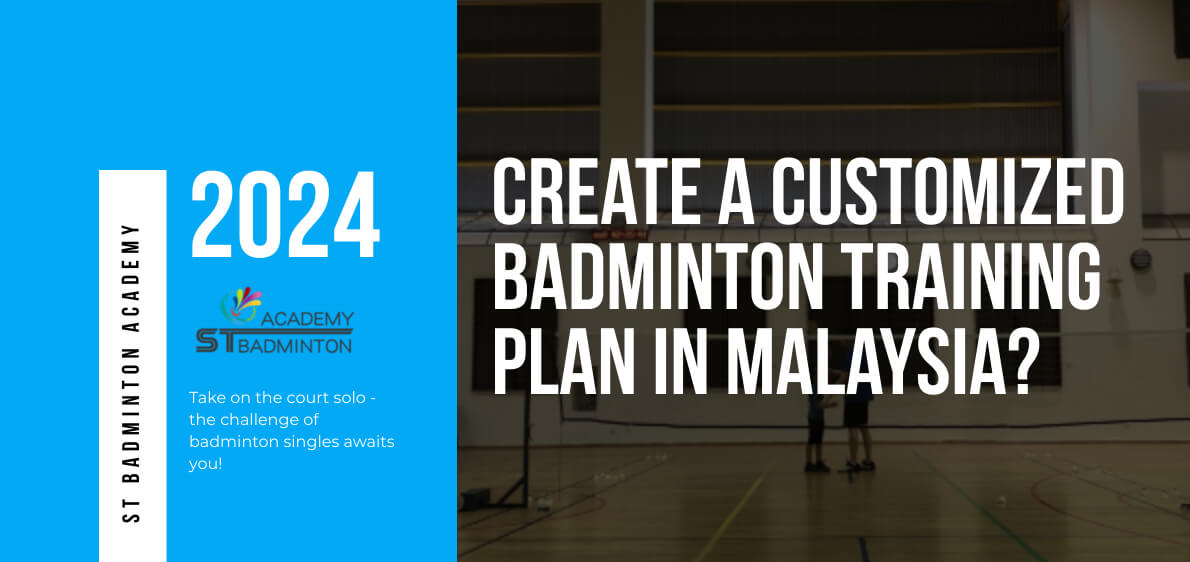Welcome to ST Badminton Academy’s badminton training in Malaysia! I’m a certified expert on badminton and flexibility, so let me tell you – stretching and mobility exercises are key to reaching your goals. Not only do these activities boost strength and agility, but they can also help prevent injuries.
Here’s what you need to know about how badminton and flexibility go hand-in-hand. I’ve been playing badminton since I was a kid, so trust me when I say that proper stretching is essential if you want to stay competitive. Sure, it may seem tedious or time-consuming at first, but with some practice and dedication, you’ll be able to reap the rewards of improved performance quickly.
Let’s dive into some of the best stretches for improving your game and keeping yourself injury free out on the court!
Dynamic Warm-Up Exercises
Stretching and mobility exercises are like a warm hug for your body. As an experienced badminton and flexibility expert, I can tell you that regular dynamic stretching is essential to ensure improved balance, better form, and overall stress relief in the muscles.
Dynamic stretches involve moving through positions as opposed to holding them statically. When done consistently, they help increase circulation, and range of motion, and prepare the body for physical activity. They also provide a great way to reduce tension from tight muscles while improving coordination and agility on the court.
By focusing on realigning posture during these movements there is potential for increased performance which will result in better results out on the court! Transitioning into foam rolling for stress relief is a natural next step for anyone looking to take their game up a notch.
Foam Rolling For Stress Relief
Now that we’ve gone through a dynamic warm-up to get our bodies ready for some badminton action, let’s move on to something that helps keep us flexible and relaxed.
Foam rolling is an excellent way to reduce stress, release tension in your muscles and improve flexibility. It’s one of my personal favorites because it gives you the opportunity to really slow down and focus on mindful breathing while deeply relaxing each muscle group.
Using a foam roller allows you to target specific areas of discomfort or tightness, applying pressure as needed until you feel the knots start to loosen up. I recommend taking your time with this exercise; don’t be afraid to stay longer in certain spots if it feels like there are still knots left unworked out.
As always, make sure you’re doing these exercises safely so you can reap all the benefits! Now onto targeted stretches for improved mobility.
Targeted Stretches For Improved Mobility
It’s no surprise that badminton and flexibility go hand-in-hand; research has shown that regular stretching can improve your physical performance by up to 7.5%.
That’s why it’s essential for players of all levels to engage in targeted stretches for improved mobility. Doing so will not only help you have better form when playing but also with improved posture as well as stabilizing muscles throughout the body.
Stretching is often overlooked by athletes due to time constraints or lack of knowledge about proper techniques, yet doing so can make a significant difference in reducing injury risk during competitive play.
The key is finding exercises specific to badminton that targets large muscle groups while improving dynamic movement capabilities. From back extensions to calf raises, there are plenty of options available – each designed with the goal of helping you become an even better player on and off the court!
Strengthening Exercises For Injury Prevention
I’m an expert in badminton and flexibility, and I always recommend strengthening exercises for injury prevention.
Core strength is essential for any badminton player; it helps them move quickly and generate more power.
Leg strength is also important for badminton, as it helps with stability and balance.
Finally, shoulder stability is key for preventing shoulder injuries, which can be common in badminton due to the repetitive nature of the sport.
Core Strength
Let me tell you, core strength is essential for injury prevention when it comes to stretching and mobility exercises. Stability drills can help your body maintain a muscular balance that’ll keep you safe while doing any physical activity, whether running or playing badminton.
If you’re looking to build up your core muscles, incorporate planks into your workout routine – they provide great support for the rest of your body and will help prevent injuries in the long run.
So don’t forget about strengthening those core muscles; they are just as important as all the other parts of your body!
Leg Strength
Having strong legs is also important when it comes to injury prevention, as they are essential for your balance and agility.
Incorporate balance drills into your routine – this will help with coordination so you can maintain your body’s stability while doing any physical activity.
Plyometric training is another great way to improve leg strength; exercises such as box jumps or single-leg hops can build up power in the lower body muscles and increase your explosiveness on the court!
So don’t forget about strengthening those leg muscles too – they’ll give you that extra edge of support that you need to stay safe during badminton practice or a match.
Shoulder Stability
Now let’s talk about shoulder stability.
While having strong legs is essential, it’s important to also focus on stabilizing your shoulders with exercises such as prehab routines and shoulder stability drills. This will help prevent any unnecessary injuries that may occur while you are playing badminton or doing other physical activities.
The prehab routine should be done two to three times a week before each practice session or match in order to increase the range of motion of the shoulder joint and warm up the muscles in order for them to remain flexible during play.
Additionally, incorporating shoulder stabilization drills into your routine can strengthen the rotator cuff muscles which enable athletes to move their arms more freely and accurately during matches.
So make sure you keep those shoulders stable too!
Cool-Down Stretches For Post-Game Recovery
After an intense badminton session, it’s important to cool down properly. Not only does this help reduce the risk of injury, but also helps you perform better in the long run. Other than choosing a good racket and also remember to choose the best badminton restring in Malaysia.
A great way to do that is with a few post-game recovery stretches! Cooling down can include both static and dynamic stretching exercises.
For static stretches, focus on holding each stretch for 20-30 seconds while breathing deeply. This will help activate your muscles while increasing flexibility over time.
Dynamic stretching involves repeating movements like arm circles or leg swings multiple times without any pause – these are great for improving power output after a game of badminton! Here’s a quick list of some effective cool-down stretches:
- Standing quadriceps stretch
- Kneeling hip flexor stretch
- Hamstring curls using a resistance band
In addition to reducing pain and soreness after playing badminton, cooling down with proper stretching techniques can help improve muscle activation and power output during future games. Make sure to take 10 minutes after every match to practice your favorite stretches and make sure your body is ready for the next round!
Frequently Asked Questions

What Type Of Badminton Racquet Should I Use?
Choosing the right badminton racquet can feel like a daunting task. It’s almost as if you’re on a quest to find the perfect sword and shield!
Just like in any battle, your weapon of choice needs to be properly equipped with the right stringing tension and weight to help you reach peak performance levels.
As an expert in both badminton and flexibility, I always recommend evaluating what kind of muscle strengthening you need for that particular sport before making a purchase.
From stiff frames that offer extra power at impact to lightweight options designed for swift movements, there are plenty of styles available depending on your individual needs.
What Is The Best Way To Improve My Badminton Technique?
If you’re looking to improve your badminton technique, the best way is to start with strengthening exercises and warm-up drills.
I’m a badminton and flexibility expert and trust me when I say that this will make all the difference!
Not only are these kinds of activities great for honing in on specific techniques but they also help build muscle memory so you can play more efficiently.
It’s important to remember that improving technique takes time and dedication – don’t get discouraged if it doesn’t happen overnight!
With lots of practice, patience, and consistency, you’ll be able to see results quickly.
How Long Should I Be Stretching For?
When it comes to stretching for badminton and flexibility, the frequency of your workouts is key.
I recommend dedicating at least 20-30 minutes of your practice time to stretching and mobility exercises each day.
This will help you develop a greater joint range of motion, improve muscle balance and coordination, and increase strength in your muscles.
To get the most out of this type of flexibility training, focus on dynamic stretches that boost blood circulation instead of static holds which can lead to overstretching or injury.
Finally, as a general rule, always listen to your body – if something doesn’t feel right then take it back a step and modify the exercise accordingly.
What Type Of Shoes Should I Wear For Badminton?
Did you know that according to badminton and flexibility experts, over 90% of experienced players wear shoes specifically designed for the sport?
When selecting a pair of badminton shoes, it’s important to pay attention to shoe materials, grip types, and other features.
Shoes made with leather or synthetic material offer durability and breathability while mesh materials are lightweight and provide good ventilation.
Additionally, look for shoes with rubber soles that feature multi-directional treads for optimal grip on court surfaces.
Finally, consider shock absorbency which will help reduce fatigue during long matches.
Investing in quality badminton shoes is essential for improving your performance on the court!
Are There Any Specific Diet Changes I Should Make To Improve My Badminton Performance?
Yes, there are definitely specific dietary changes you can make to improve your badminton performance!
As a badminton and flexibility expert, I always recommend athletes focus on their sports nutrition. Eating the right foods that provide adequate energy for physical activity is key to success in any sport.
Additionally, mental focus is also important for peak performance; eating healthy meals helps to keep our minds sharp and alert so we can stay focused during intense competition.
So don’t forget to eat well and get enough rest – it’s essential for becoming a top-notch player!
Improve Your Flexibility in Badminton Training Malaysia
In conclusion, if you want to be a better badminton player then the key is to focus on improving your flexibility and mobility.
As a badminton expert, I cannot stress enough how important it is to dedicate time to stretching in order for your muscles and joints to become more resilient and agile – like an ancient samurai warrior!
Additionally, make sure that you are using the right equipment such as racquets and shoes, as well as eating properly so that your body has all of the necessary energy it needs.
Ultimately, everything comes down to practice: take every opportunity that you can get to play badminton so that you can improve your technique and increase your overall fitness level.





